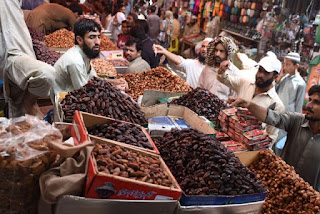pakistani news online
06:23
Bus fares house rent and food are now more expensive with inflation rising to 7.2%
Rent, bus fares, and food all cost more now, while inflation in Pakistan has reached its highest level in four and a half years. The annual inflation rate reached 7.2% in January.
It was 6.2% in December, according to data released Friday by the Pakistan Bureau of Statistics. As inflation increases, the price of goods and services also increases. So, the products you use every day at home, such as sugar, daal, fruits, and vegetables, are all more expensive now.
But it's not just food products that have become more expensive. In January, electricity tariffs increased by 8.5% and drugs by 15% more expensive. The rent increased by 2.38% and the price of the bus ticket by 50%.
Foods such as tomatoes have become 28% more expensive, while sugar prices have increased by 6%. Fruits are 3% more expensive, while dried fruits and dried fruits (a favorite of winter) are 2.2% more expensive. Tea leaves are also 17% more expensive.
But the biggest price increase is gas, which costs 85% more now. This is compared to the price of gas in January 2017. Health services, in general, are 8.4% more expensive and cigarettes are 20% more expensive.
Diesel costs 19% more, in general,e cost of domestic LPG cylinders has increased by 15%.
Cosmetics, water, and building materials have all become 13% more expensive and cars will cost you 14% more now.
When the PML-N government relinquished control to the interim government in May 2018, the inflation rate was 4%. When the interim government surrendered control to PTI in August 2018, it was at 5.8%. But now, in January, inflation was 7.2%.
This is the highest inflation rate since August 2014, when it was 7%.
The State Bank of Pakistan warned in a report released on December 2, 2018, that inflation could rise from 6.5 percent to 7.5 percent in 2019.
On December 4, the statistics office released inflation data, which indicated that inflation had reached 6.5 percent in the country.
This higher than expected increase in inflation came after the State Bank devalued the rupee five times since December 2016. The rupiah weakened by 26% against the dollar during this period.











